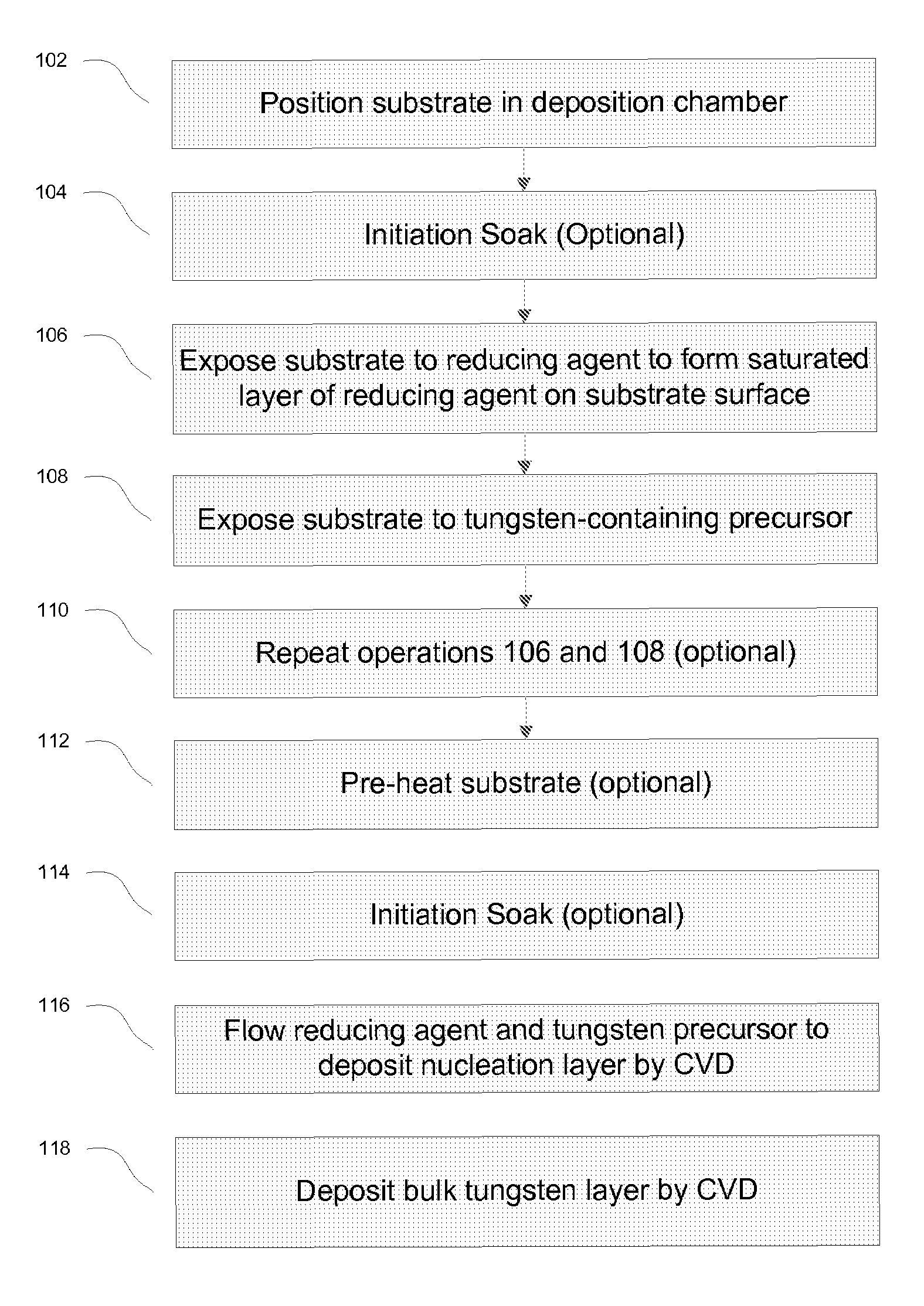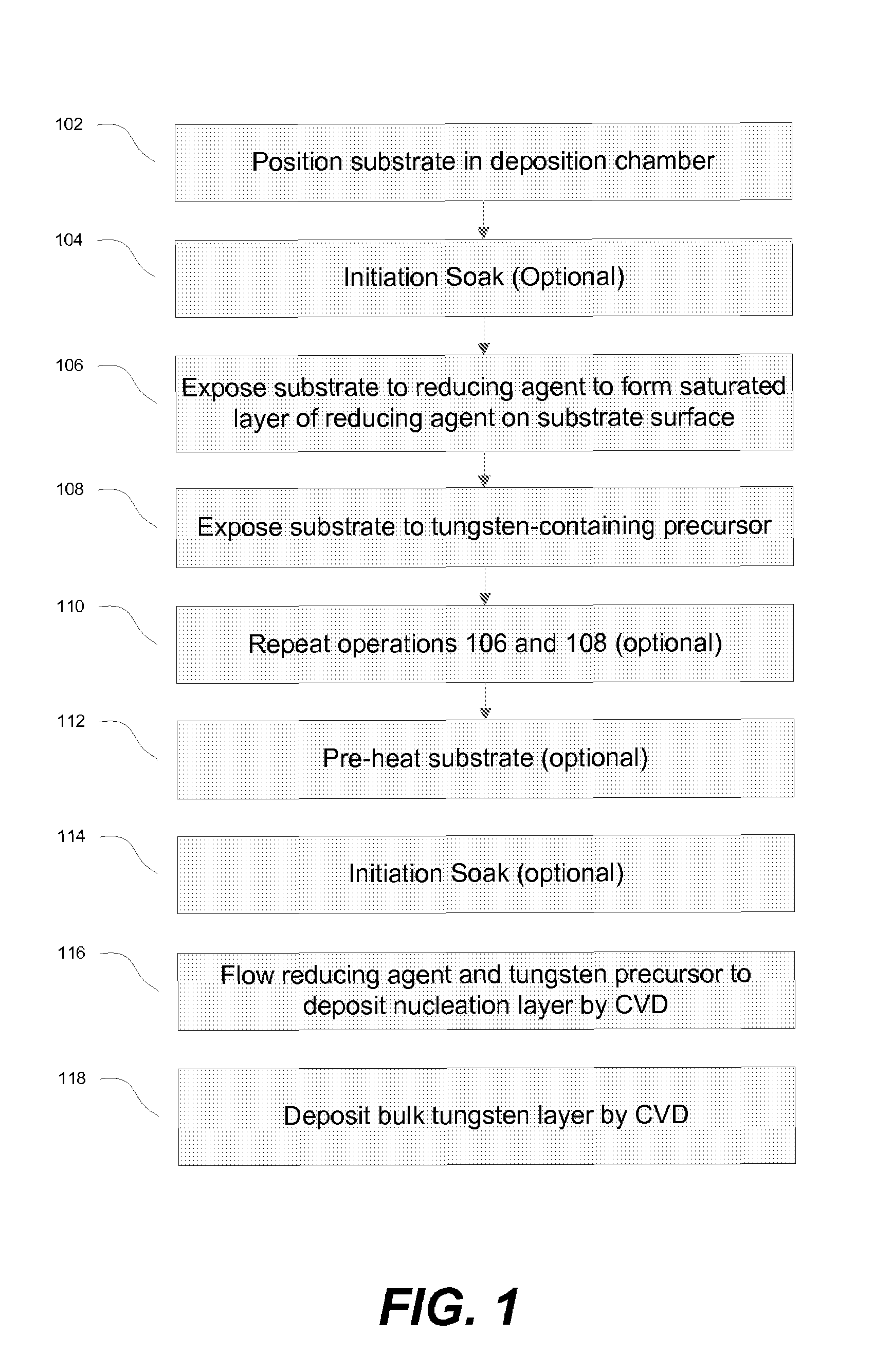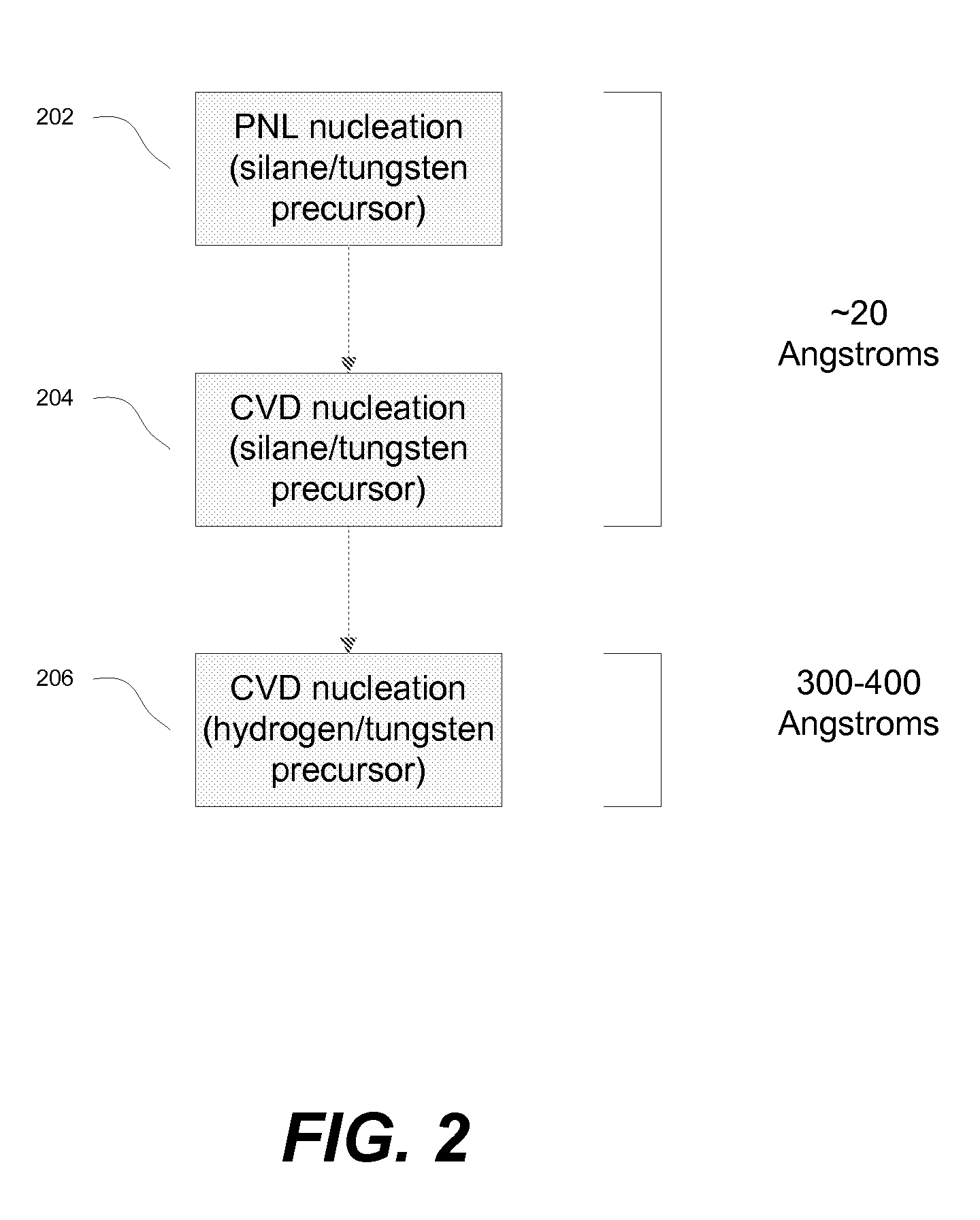Methods for improving uniformity and resistivity of thin tungsten films
a thin tungsten film, uniformity technology, applied in the direction of coatings, basic electric elements, chemical vapor deposition coatings, etc., can solve the problems of limited ability to provide nucleation layers for the deposition of low resistivity tungsten in smaller features with high aspect ratios, and cannot be produced easily and reliably. achieve the effect of low resistivity
- Summary
- Abstract
- Description
- Claims
- Application Information
AI Technical Summary
Benefits of technology
Problems solved by technology
Method used
Image
Examples
examples
A 350 Angstrom tungsten film was deposited using the sequence given in the following table:
[0031]
LayerProcessPressure, Temp, TimeNucleation2 PNL Cycles40 Torr, 325 C.(SiH4 / WF6)CVD (SiH4 / WF6)40 Torr, 415 C., 2 secondsBulkCVD (H2 / WF6)40 Torr, 415 C., 11 seconds
The resulting film had a non-uniformity of 2.5% and a resistivity of 19 tΩ-cm. This is an improvement over both the CVD-only and PNL-only processes as discussed above.
As indicated above, the PNL portion of the nucleation process does not result in measurable deposition in certain embodiments. This is shown in the below data on the PNL portion:
[0032]
Number of PNLcycles (SiH4 / WF6)TemperatureThickness2325 C.4325 C.14 Angstroms6325 C.36 Angstroms
Although 2 PNL cycles did not result in measurable deposition, it enhances the CVD tungsten nucleation and growth. This is shown in the table below:
[0033]
%Non-uniformityThickness(sheet metalResistivityProcess(Angstroms)resistance)(μΩ-cm)CVD 2s nucleation + CVD37615.0118.9bulkCVD 4s nucleatio...
PUM
| Property | Measurement | Unit |
|---|---|---|
| thick | aaaaa | aaaaa |
| thick | aaaaa | aaaaa |
| pressure | aaaaa | aaaaa |
Abstract
Description
Claims
Application Information
 Login to View More
Login to View More - R&D
- Intellectual Property
- Life Sciences
- Materials
- Tech Scout
- Unparalleled Data Quality
- Higher Quality Content
- 60% Fewer Hallucinations
Browse by: Latest US Patents, China's latest patents, Technical Efficacy Thesaurus, Application Domain, Technology Topic, Popular Technical Reports.
© 2025 PatSnap. All rights reserved.Legal|Privacy policy|Modern Slavery Act Transparency Statement|Sitemap|About US| Contact US: help@patsnap.com



